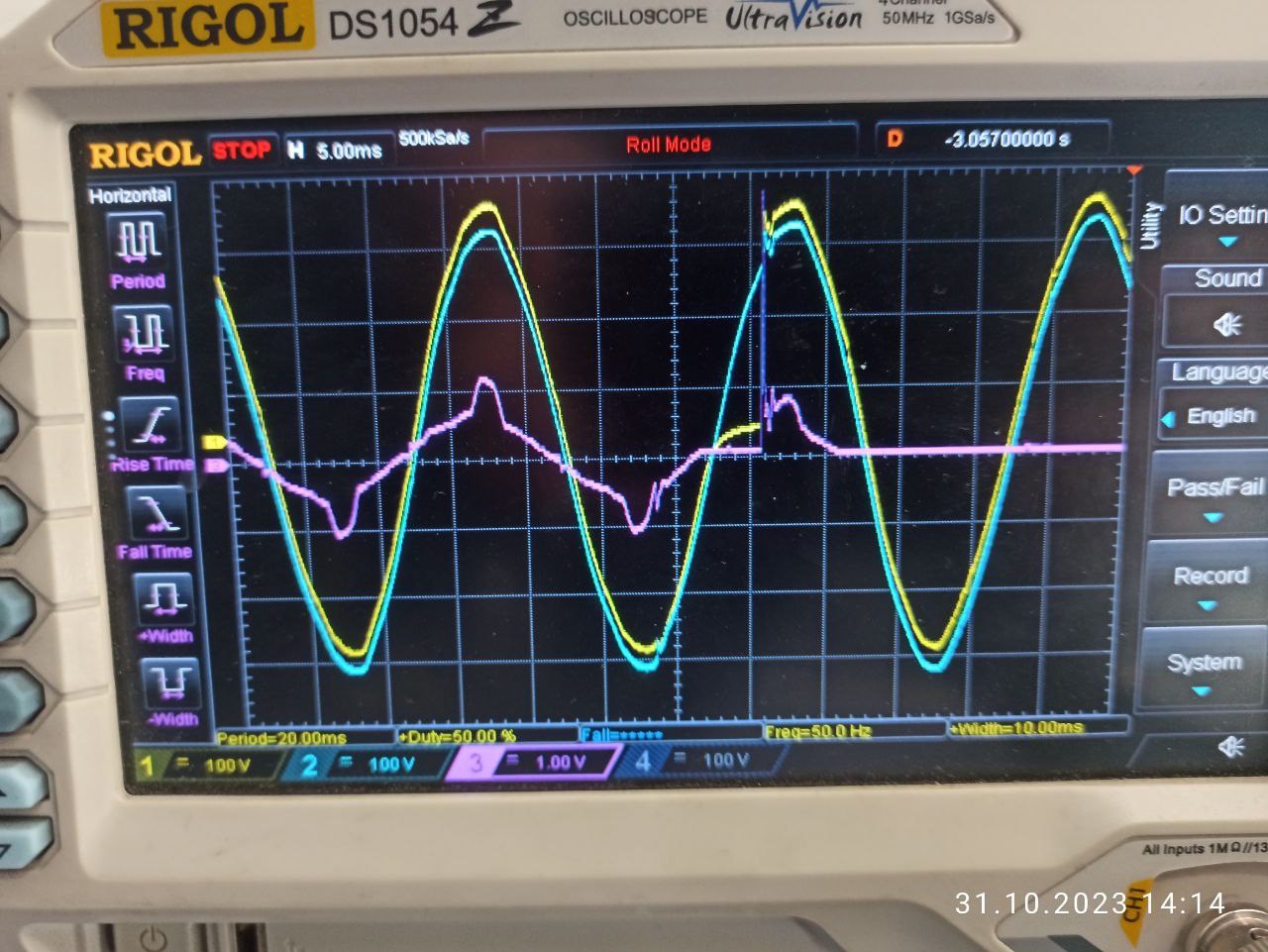Hi all!
There is a three phase system based on quattro 10kva. there are three voltage stabilisers at the inverter input, which force the inverter to switch to battery operation mode very often.
Yellow signal - voltage at the inverter input. The voltage is distorted but not disconnected. This form of voltage causes the inverter to switch to battery operation mode. Is it possible to configure the inverter so that it does not switch to battery operation mode in the event of such a distortion of the input voltage?
When stabilisers are in transit mode everything is ok!
Is there any solution to this problem.
Thanks a lot!

